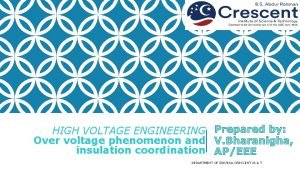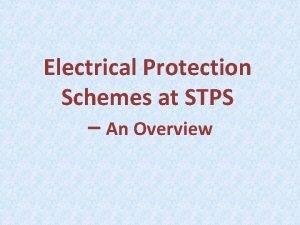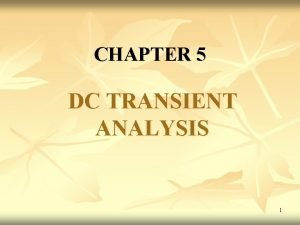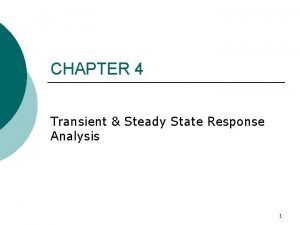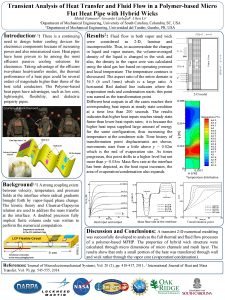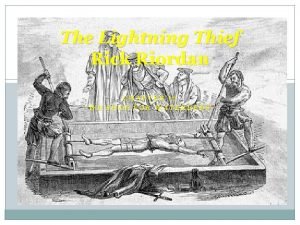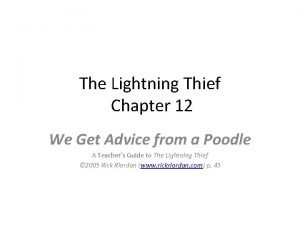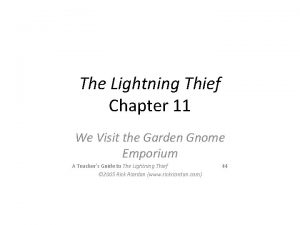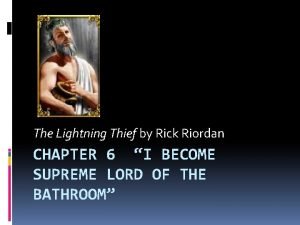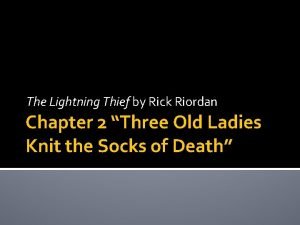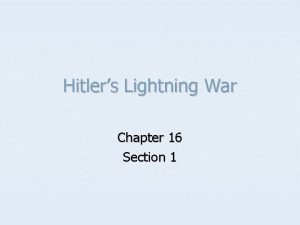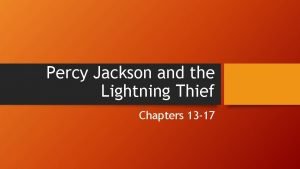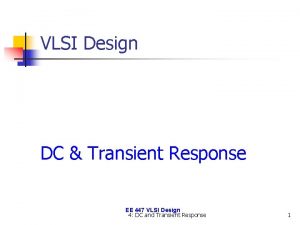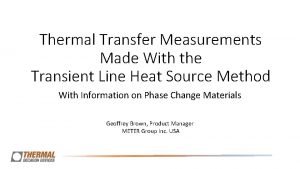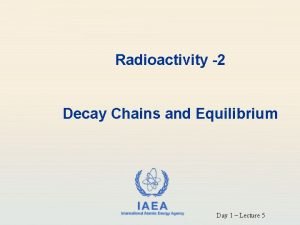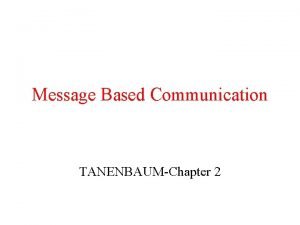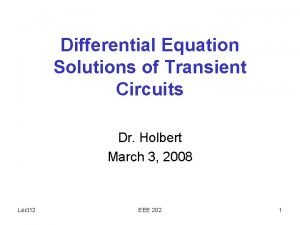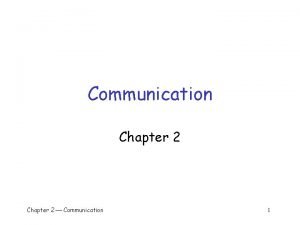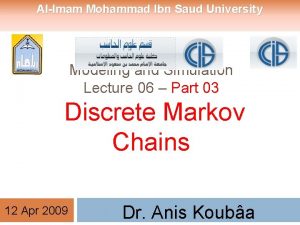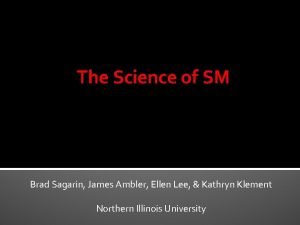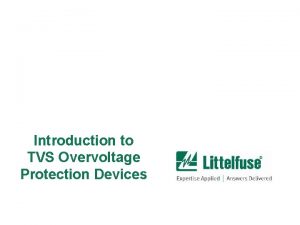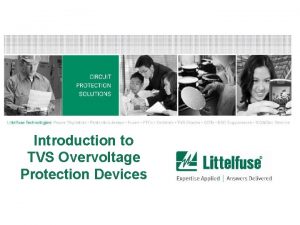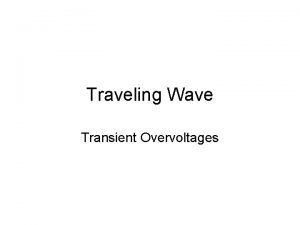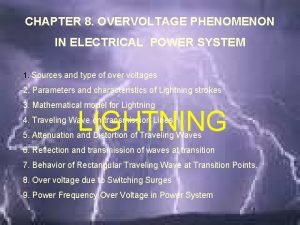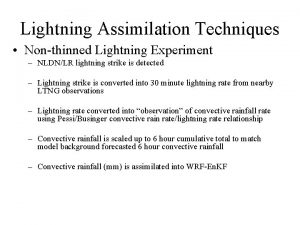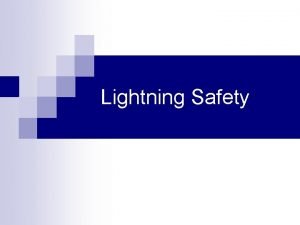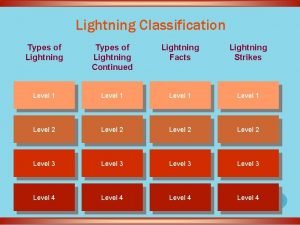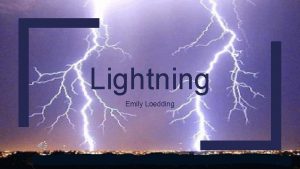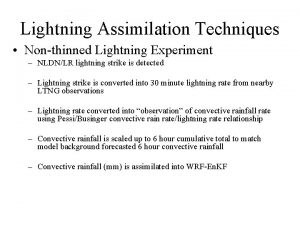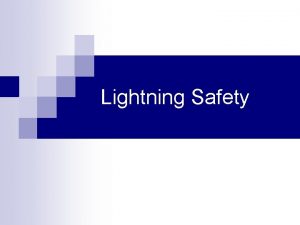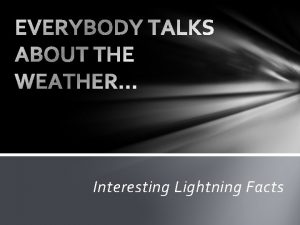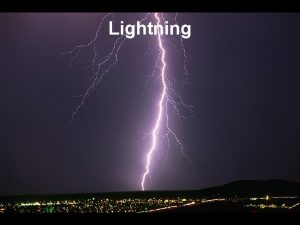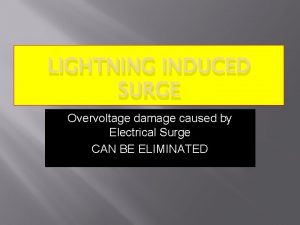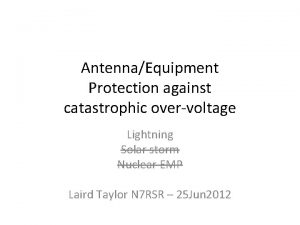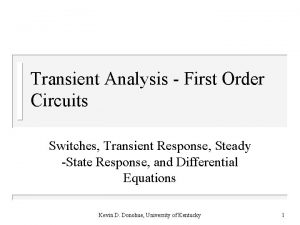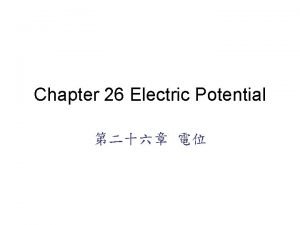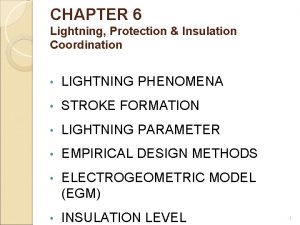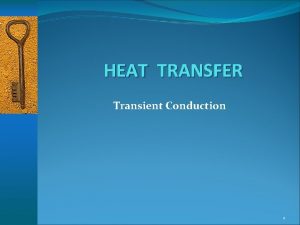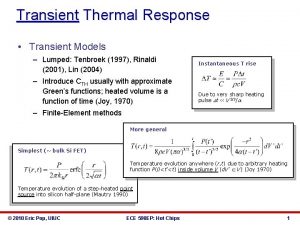CHAPTER 8 OVERVOLTAGE PHENOMENON HV TRANSIENT ANALYSIS Lightning



























- Slides: 27

CHAPTER 8 OVERVOLTAGE PHENOMENON &HV TRANSIENT ANALYSIS Lightning Phenomena HV Transient Analysis

IEC 60071: CLASSIFICATION OF OVERVOLTAGES SHAPES

LIGHTNING PHENOMENA WHAT IS LIGHTNING? Lightning is an electric discharge in air, one terminal of which is cloud. During storms, charges are accumulated in clouds and equal charges of opposite polarity are formed in earth. As these charges increases, the voltage gradient in the air adjacent to the charge center in the cloud increases.

CON’T When the gradient exceeds the insulation strength of air, a low current streamer starts downward from the cloud and continues to grow. When the streamer makes contact with the earth, it is like closing a switch between the two charges of opposite polarity, one is the earth and the other in the streamer channel and in the clouds. Thus large current flows.

DIFFERENT TYPE OF LIGHTNING Intra-cloud (within the clouds) Cloud to cloud Cloud to ground Cloud to air Positive stroke or “Blue sky lightning”

CON’T

CON’T Lightning Current: Peak Value Typical value for the first stroke is 30 k. A. � Typical value for the subsequent stroke is 15 k. A. � Values over 250 k. A has been recorded. �

CON’T Stepped Leader It propagates ionizing the virgin air. It comes in steps of length about 50 m. It pauses few tens of microseconds before starting the next step. The average speed of a stepped leader is in the order of 105 m/s. In the last few tens of meters the speed increases due to the enhanced field strength in the presence of ground. It brings a charge of about 5 Coulombs to ground.

CON’T Return Stroke The main event of a lightning flash. It takes the earth potential to the cloud. Return stroke drains charge in the channel and then in the cloud into ground. At the channel base, it produces a double exponential current waveform. The zero crossing time of the current is 40 – 60 μs The speed of return stroke is about 1/3 of the speed of light. It produces strong emission of electromagnetic radiation. The electric and magnetic fields of return stroke has different shape at different distances. They induce voltages on conducting wires.

CON’T Lightning Current and Voltage Parameters Current and Voltage amplitude. The rate of current: 7. 5 - 25 k. A/μs. Voltage waveform: 1000 - 5000 k. V; 1 MV/μs. Voltage rise time: 2 – 10 μs and tail time 20 – 100 μs.

CON’T Direct and Indirect Lightning Strokes Lightning produces high voltages in structures. If the light strikes direct to the structures then high current flows through it. This is called “DIRECT STROKE”. The other way in which lightning produces voltage in a line is by electrostatic induction. This is called “INDIRECT STROKE”.

LIGHTNING PROTECTION Some of the methods used for lightning protection are as follow; � Lightning Arrestor (Surge diverters). � Earth Wires. � Auxiliary devices. � Grounding system

CON’T Lightning Arrestors Lightning arresters are the devices which are used to protect the power system to being damage from over voltages by diverting their path to the ground. When the voltage surge reaches the arrester, it sparks over at a certain prefixed spark over voltage. Then provides the surge with a low impedance path between the earth and line. Thus voltage of the line remains in the limit, and the power system is being saved.

Grounding Establishing an electrical connection to earth. Establishing a common reference point for all voltage related to a given system. Factors Effecting Grounding Soil Resistivity. The Application Requirement. How the Grounding System is to be used. The number of earth interfaces that are to be provided for one facility. The grounding resistance or surge impedance actually achieved.

CON’T When lightning strikes, the electric charges pass through lightning conductor to the earth without causing any damage to the building.

HIGH VOLTAGE TRANSIENT ANALYSIS Surges on transmission line High voltage surges induced on the transmission line due to; � Direct stroke � Indirect stroke � Switching Operation The surge travels along the line at the speed of light. As they reach the end (termination) or junction of the line, partly are reflected and transmitted.

CON’T

CON’T

CON’T

CON’T

CON’T

CON’T Bewley Lattice Diagram to show the position and direction of incident, reflected and transmitted wave on the system at every instant of time. Properties; � All waves travel downhill because time increases. � Position of any wave at any time can be deduced directly from the diagram. � Total potential at any point is the superposition of all the waves arrived at that point. � History of wave easily traced. � Attenuation is included

CON’T Let t is the time taken for a wave travel from one end of line to the other end of the line and k the corresponding attenuation factor.

CON’T

EXAMPLE 1 An overhead line for which L = 1. 5 m. H/km and C = 0. 015 µF/km is connected to a cable for which L = 0. 25 m. H/km and C = 0. 45 µF/km. If a surge of 10 k. V originates in the line and enters the cable, calculate the voltage and current in the cable. Answer: Voltage in cable: 1387 V Current in cable: 58. 85 A

EXAMPLE 2 The ends of two long transmission lines A and B are connected by a cable C 1. 5 km long. The lines have capacitance of 10 p. F/m and inductance 1. 6 × 10 -6 H/m and the cable has capacitance 89 p. F/m and inductance 5 × 10 -7 H/m. A rectangular voltage wave of magnitude 10 k. V and of long duration travels along line A towards the cable. Draw the Bewley Lattice diagram during 40 µsec after the initial surge reaches Junction of line A and the cable.

EXAMPLE 3 A 500 k. V surge on a long overhead line of characteristic impedance 400 Ω, arrives at a point where the line continues into a cable AB of length 1 km having a total inductance of 264 µH and a total capacitance of 0. 165 µF. At the far end of the cable, connection is made to a transformer of characteristic impedance 1000 Ω. The surge has negligible rise-time and its amplitude may be considered to remain constant at 500 k. V for a timelonger than the transient times involved here. Draw the Bewley lattice diagram at the junction A of the cable for 26. 4 µsec after the arrival at this junction of the original surge.
 Switching overvoltages in ehv and uhv systems
Switching overvoltages in ehv and uhv systems Low forward power protection
Low forward power protection Dc transient analysis
Dc transient analysis Steady state response formula
Steady state response formula Transient analysis thermodynamics
Transient analysis thermodynamics Percy jackson and the lightning thief chapter 17 summary
Percy jackson and the lightning thief chapter 17 summary The lightning thief chapter 12
The lightning thief chapter 12 Percy jackson chapter 11 pdf
Percy jackson chapter 11 pdf Percy jackson the lightning thief chapter 6
Percy jackson the lightning thief chapter 6 Percy jackson the lightning thief chapter 2
Percy jackson the lightning thief chapter 2 Chapter 7 the lightning thief
Chapter 7 the lightning thief Chapter 16 section 1 hitlers lightning war
Chapter 16 section 1 hitlers lightning war The lightning thief word search
The lightning thief word search Why does percy feel ashamed that poseidon saved him
Why does percy feel ashamed that poseidon saved him Lightning rod chapter 6
Lightning rod chapter 6 Transient response in vlsi
Transient response in vlsi Transient tic disorder
Transient tic disorder Transient line source method
Transient line source method Transient equilibrium equation
Transient equilibrium equation Adam moulton method
Adam moulton method Message-oriented communication definition
Message-oriented communication definition Jpa weak entity
Jpa weak entity Natural solution
Natural solution Persistent synchronous communication
Persistent synchronous communication Examples of conditional evidence
Examples of conditional evidence Examples of conditional evidence
Examples of conditional evidence Alimam
Alimam Transient hypofrontality
Transient hypofrontality
